All emerging businesses need more clients. Taking a systematic approach to customer acquisition not only saves time and money; your company’s very success relies on the ability to focus on finding and servicing the right clients while weeding out the wrong ones.
It really is true that your clients determine the level of success of your business. Whatever products or services you sell, when you have great clients—ones who provide you with plenty of business and who willingly pay your fees—then all is good. After all, you’re dealing with people you like and earning the money you want. On the other hand, if you have clients who are difficult to work with or don’t pay well, life can be downright dismal!
When prospecting for new clients, far too many emerging businesses use a “spray-and-pray” approach, in which they spray their messages to as many people as possible using different marketing methods while praying that the right client bites. This is unpredictable, ineffective and expensive. In order to win over new clients you need a clearly defined sales strategy.
Below are six tips for your emerging business to help you attract the best clients.
1. Observe the 80/20 Principle: In business terms, this old adage states that 80 % of your revenue may be generated by the top 20 % of your customers (with obvious variances depending on the business).
Make a list of your top tier clients and note their characteristics, the relationships you have with them and the products or services you provide for them. These profiles will reveal those product or service areas that require expansion and which ones should be eliminated, automated or outsourced. It will also help you develop the proper “audition” questions to better qualify new prospects. You can then decide if potential clients are a good fit by comparing their characteristics with those of your top-level clients.
2. Network: Set a goal to connect with at least one new prospect each day, or week or whatever is reasonable and achievable. Some of this can be done through cold calling or various online methods such as social media, e-newsletters and opt-in emails and alerts (but be aware of Canadian anti-spam legislation (CASL)).
However, you also need to do your research and find out where your ideal clients go to network, and then physically go where they are. Examples include trade shows, conferences, seminars, expos and your local Chamber of Commerce. This means getting out of the office and off your computer—because nothing beats face-to-face contact.
3. Follow Up: Millions of dollars are lost by emerging businesses each year because they fail to follow up on promising leads from conferences, email, social media, voicemail, referrals and much more. The reasons are many but disorganization, procrastination and busyness lead the way. Don’t sabotage your own success by leaving money on the table. If you want to be successful, you need to use a regimented and tracked follow-up system.
4. Offer Freebies: In order to build trust and authority and obtain contact information from new prospects, your company website needs to provide various Calls-to-Action (CTAs) that contain valuable benefits. A CTA should be something that your audience really wants, such as a beneficial E-book, an important White Paper or a worthy Webinar invite. All of these E-lead-generation assets should offer constructive solutions to prospects’ problems.
5. Verticalize: If you sell a niche product across various industries, you should consider vertical marketing. This involves targeting specific industries you sell to (e.g. property management firms, restaurant chains, car parts manufacturers or farm equipment distributors). The reason this works is that C-level decision makers prefer to deal with specialists who understand their industries as opposed to jack-of-all-trades generalists.
6. Apply Firmographics: Firmographics takes vertical marketing several steps further by examining the demographics of specific firms. Criterion are extended beyond industry type to include employee size, number of locations, years in business, and revenue—allowing you to subdivide into those with common characteristics and similar product or service needs.
For instance, at MoreSALES we find the “Three Fives Rule” works well in terms of our prospects’ traits:
1. 5+ employees
2. 5+ years in business
3. 500 K+ in annual revenue
Once we find the right fit, we then work with the owner, president and senior staff members.
The ultimate goal of your client selection process is to determine whether a good match exists between your company and your prospects. If you don’t know what you want in a client, you’ll end up taking whoever comes along. The secret to getting high-level clients who will pay your fees and provide you with plenty of return business, is knowing whom they are in the first place.
Finally, you need to provide amazing service with measurable results so that your existing clientele supply ongoing referral business.




Comments are closed.